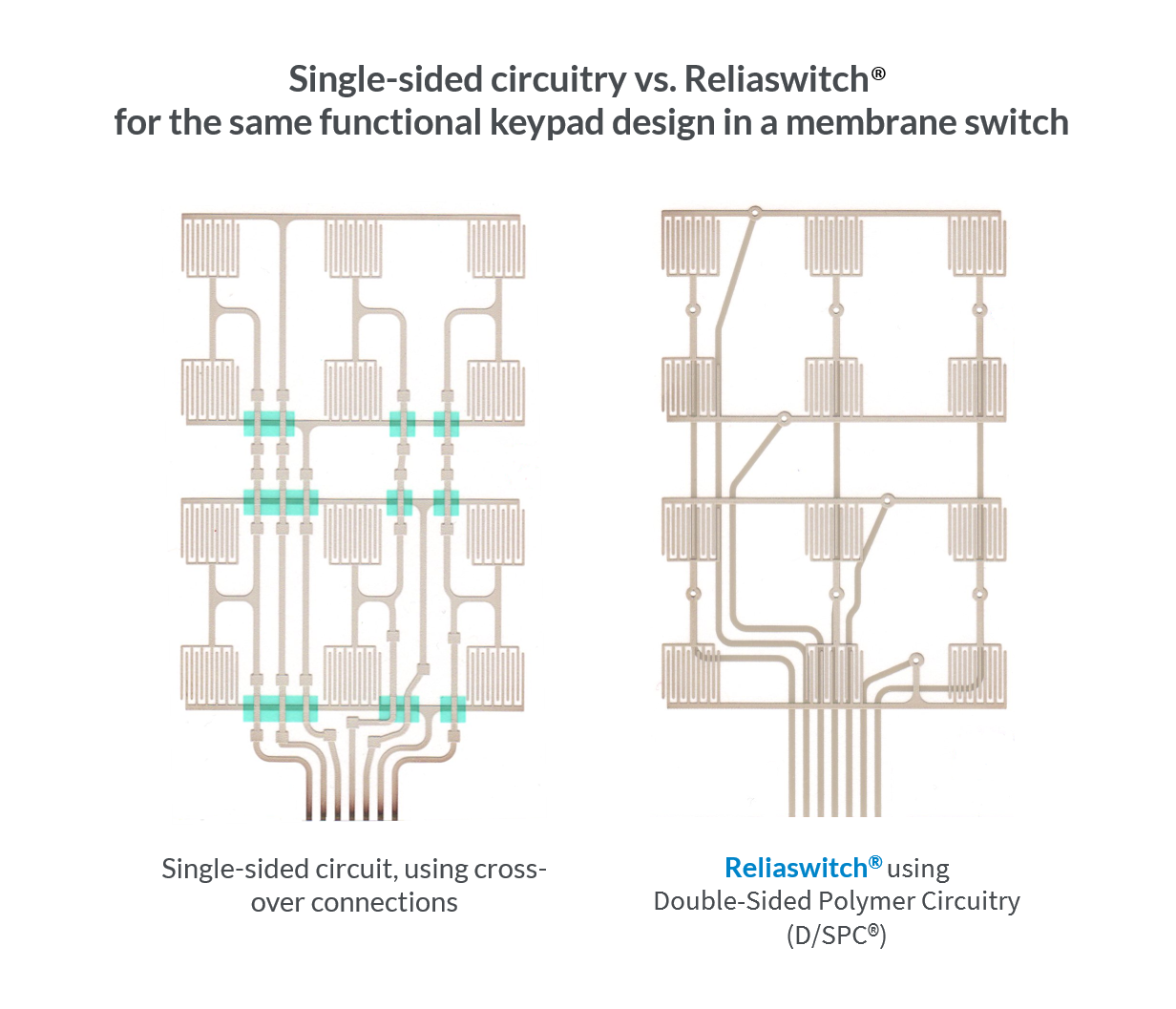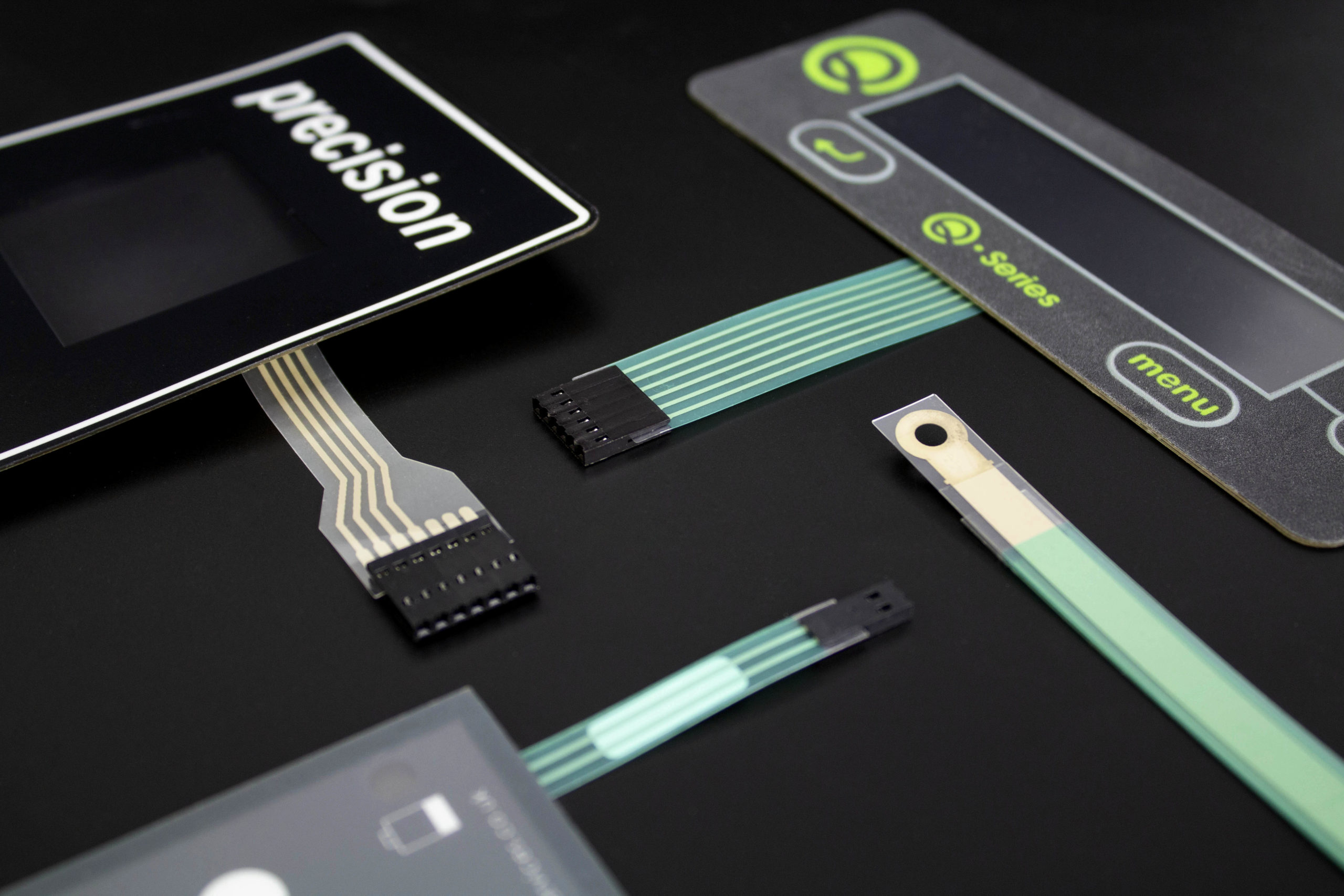All Regarding Membrane Switch Over: A Comprehensive Overview for Beginners
Membrane buttons are necessary parts in contemporary electronics, offering an one-of-a-kind user interface for user communication - membrane switch. Their layered construction, consisting of overlays and conductive traces, supplies functionality and longevity. Unlike standard mechanical switches, membrane layer switches offer a sleek layout and adjustable options. Comprehending their key attributes and benefits can change product layout. The complexities of their application and layout considerations necessitate further expedition.
What Is a Membrane layer Change?
A membrane layer button is a type of electric button that consists of an adaptable membrane layered over a printed motherboard. This layout enables a small and streamlined interface, commonly made use of in different digital tools. Membrane layer buttons are frequently located in consumer appliances, clinical tools, and industrial machinery because of their durability and resistance to environmental factors.The building commonly consists of multiple layers, such as graphic overlays and sticky support, which give responsive feedback and safeguard the circuitry beneath. The procedure of a membrane layer button is launched when stress is related to the surface, completing an electrical circuit.These switches are valued for their adaptability, making it possible for personalized layouts and printed graphics that accommodate specific interface. Their inconspicuous nature decreases area demands, making them suitable for applications where standard buttons might not fit. Generally, membrane layer switches provide a practical and aesthetic solution for modern digital gadgets.
Secret Elements of Membrane Layer Changes
Membrane changes make up a number of key parts that add to their functionality and performance. The top layer, known as the overlay, provides the individual interface and is typically published with signs or graphics. Below the overlay exists a spacer layer, which divides the conductive aspects and protects against unintended activation. The next essential component is the visuals layer, which boosts aesthetics and guarantees the longevity of the design.Conductive traces, generally made from products like silver or carbon, are printed on the circuit layer. When pressure is related to the overlay, these traces enter get in touch with, finishing the circuit. Furthermore, a backing layer offers architectural assistance and can be made from materials such as polyester or polycarbonate. Together, these parts produce a reputable, user-friendly interface suitable for various applications, from family devices to industrial tools. Recognizing these components is important for anyone curious about membrane switch innovation.
Exactly How Membrane Changes Work
Comprehending exactly how membrane layer changes feature is crucial for valuing their prevalent usage in different gadgets. A membrane layer button operates through a series of layers, including a graphic overlay, spacer, and a circuit layer. When stress is applied to the overlay, it presses the spacer layer, allowing the circuit layer to make contact and complete an electrical circuit. This action sends out a signal to the gadget, prompting a response, such as transforming on a light or turning on a function.Membrane switches over can be developed with different functions, consisting of tactile feedback, backlighting, and custom graphics, improving individual communication. Their building permits a closed style, securing the interior components from dirt, dampness, and pollutants. This toughness makes them appropriate for diverse applications, from customer electronic devices to industrial equipment. Overall, the simplicity and effectiveness of membrane layer switches add to their popularity in contemporary innovation.
Benefits of Membrane Layer Switches Over Mechanical Buttons
While mechanical buttons have long been a staple in numerous tools, membrane layer switches offer unique benefits that make them increasingly appealing. One substantial advantage is their slim profile, enabling more portable layouts and better adaptability in item development. Additionally, membrane switches feature a consistent surface, which enhances visual allure and streamlines cleaning, making them suitable for environments where health is critical.Another benefit is their resistance to dust and moisture. Unlike mechanical switches, which can be jeopardized by ecological aspects, membrane layer buttons provide a covered interface that safeguards against contaminants - membrane switch. Membrane switches generally have a longer life expectancy due to less relocating parts, resulting in boosted sturdiness and reliability.Cost-effectiveness is additionally a significant advantage, as membrane buttons can be generated in mass with reduced production prices. These factors incorporate to place membrane buttons as a useful option to standard mechanical alternatives in various applications
Usual Applications of Membrane Changes
Membrane switches are extensively used in different sectors, especially in customer electronics and commercial control board. In customer tools, they offer a smooth, easy to use interface, while in commercial setups, they enhance longevity and functionality. Comprehending these applications highlights the versatility and usefulness of membrane switches in contemporary technology.
Consumer Electronics Devices
As customer electronic devices proceed to evolve, membrane layer buttons have actually come to be a popular option for a range of devices because of their adaptability and streamlined layout. These buttons are frequently discovered in smartphones, tablets, and remote controls, where area is restricted and aesthetic appeals matter. Their low profile and personalized styles permit manufacturers to create user-friendly interfaces that enhance the general customer experience. In addition, membrane layer buttons are frequently made use of in home appliances such as microwaves company website and coffee machine, supplying intuitive control alternatives while standing up to wetness and dust. The durability and reliability of membrane switches make them appropriate for daily customer items, guaranteeing longevity and regular efficiency. Generally, their assimilation in customer electronics mirrors a blend of performance and modern-day design.
Industrial Control Panels
The applications of membrane changes prolong past customer electronics, discovering substantial usage in industrial control panels. These switches are favored for their sturdiness and resistance to rough atmospheres, making them suitable for making and process control settings. They give a trustworthy interface for drivers to control machinery, display procedures, and readjust setups. Membrane layer buttons can be tailored to fit certain operational needs, incorporating functions like backlighting and responsive feedback, boosting customer experience. Their low-profile design permits combination into different tools, while their capability to hold up against spills, dust, and severe temperatures assurances durability. On the whole, membrane switches contribute to reliable and safe procedure in industrial applications, showing their adaptability and effectiveness in demanding atmospheres.
Considerations for Creating Membrane Layer Switches Over
When designing membrane layer switches, picking the best materials is crucial to ensure toughness and performance. In addition, understanding layer setup methods can significantly affect the switch's performance and customer experience. These considerations play a vital function in creating reliable and efficient membrane layer button designs.
Material Selection Relevance
Material selection plays a vital role in the design and functionality of membrane layer switches. The selected products straight impact the switch's durability, tactile reaction, and general aesthetic. Secret factors to consider consist of the substratum, which must offer structural honesty while permitting for flexibility, and the graphic overlay, which needs to be resistant to put on and ecological variables. Conductive materials need to ensure reliable electrical performance, while adhesives have to provide solid bonding without endangering the button's procedure. Furthermore, compatibility with manufacturing processes and end-user atmospheres is vital; products need to stand up to differing temperature levels, humidity levels, and chemical exposure. Ultimately, proper material option not just improves the membrane switch's efficiency however additionally adds to its longevity and user satisfaction, making it an essential aspect of the design procedure.

Layer Setup Strategies

Regularly Asked Inquiries
For How Long Do Membrane Switches Over Commonly Last?
Membrane layer buttons usually have a life expectancy of 1 to 5 million cycles, relying on usage and ecological conditions. Variables such as design high quality and operating frequency greatly affect their toughness and overall efficiency long life.

Can Membrane Switches Be Customized for Specific Layouts?
Membrane layer buttons can without a doubt be personalized to accommodate particular designs, enabling for diverse forms, shades, and functionalities. This versatility enables makers to tailor these switches to satisfy distinct visual and operational demands effectively.
What Materials Are Used in Membrane Layer Change Building?
Membrane switches are typically built utilizing products such as polyester, polycarbonate, and glue layers. These materials offer resistance, sturdiness, and adaptability to environmental factors, ensuring the buttons operate properly in different applications and problems.
Are Membrane Layer Switches Over Water-proof or Resistant to Wetness?
Membrane layer buttons can be made to be moisture-resistant, utilizing specialized materials and coatings. However, their waterproof capabilities depend upon building quality and details applications, making it vital to examine needs for optimal efficiency in various environments.
Just How Are Membrane Layer Changes Fixed if Harmed?
Repairing broken membrane switches over typically involves changing the impacted layer or circuit. Professionals might additionally apply conductive sticky or use specialized repair work packages, guaranteeing capability is restored without complete substitute of the whole switch setting up. Unlike traditional mechanical switches, membrane layer switches present a sleek design and adjustable choices. A membrane switch is a kind of electrical switch that consists of an adaptable membrane layered over a published circuit board. The procedure of a membrane button is initiated when stress is applied to the surface area, finishing an electrical circuit.These switches are valued for their flexibility, enabling customized layouts and published graphics that provide to specific user interfaces. While mechanical switches have long been a staple in numerous tools, membrane layer switches over offer distinct advantages that make them progressively appealing. Membrane buttons typically have a longer life-span due to fewer relocating components, resulting in improved sturdiness and reliability.Cost-effectiveness is additionally a noteworthy advantage, as membrane layer switches can be generated in mass with lower production costs.